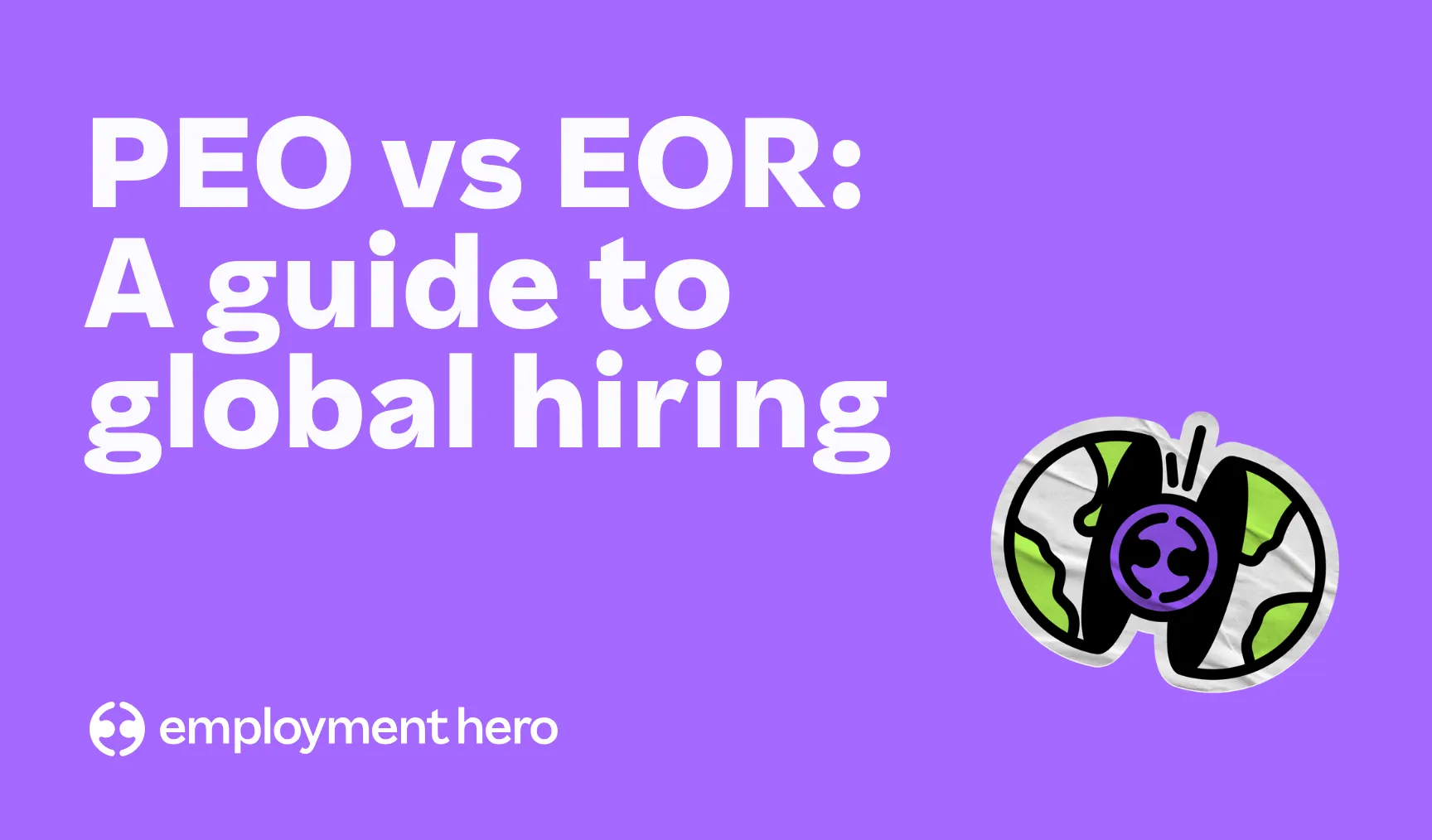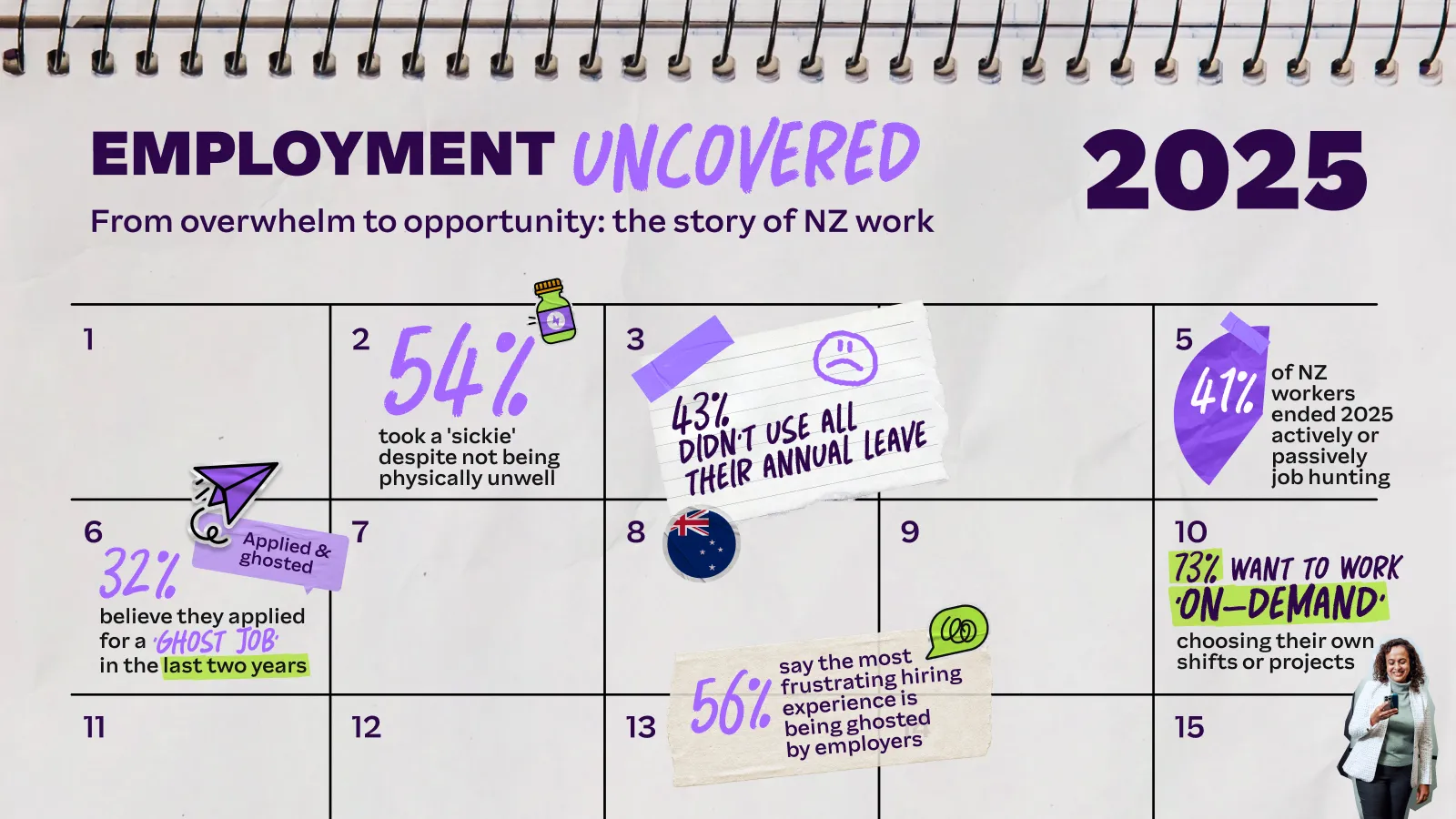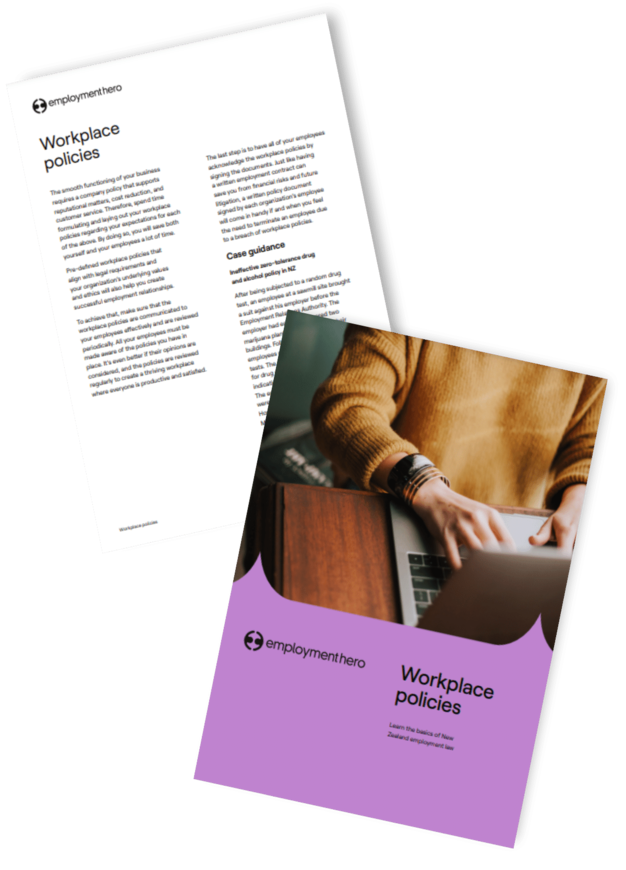7 HR policies and procedures for SMBs
Here are some of the HR policies and procedures you need to have in place.

If you think of the bottom of your to-do list, you might find some ad hoc HR tasks. Maybe it’s updating your employee value proposition, investing in HR software or creating essential HR policies and procedures for your business. We know that you’re busier than ever, however, this is a sign to revisit that list and finally tick off creating those long-awaited company policies.
Many businesses often overlook the role human resource management plays in keeping a business on the right side of employment law. If you’re a small business leader, you’ll already be aware that HR compliance is an integral part of your responsibilities – and this is where the role of policies and procedures comes into play.
As your business grows, employment compliance and governance is an area you need to prioritise. In the long run, time spent formulating an effective HR compliance plan (complete with well thought out and comprehensive HR policies) will save costs, time, and heartache down the track. It will also help you reduce the risk of fines and/or costly litigation by ensuring that your business complies with necessary HR legislation in New Zealand.
A well-written, clearly communicated policy helps set clear employee expectations around behaviour and workplace procedures. Workplace policies shouldn’t be mysterious documents that wither away on dusty shelves. Instead, they’re dynamic tools that articulate your organisation’s values, culture, systems and processes.
These policies and procedures help to frame your organisation’s expectations around your employees’ behaviour. If you’re wondering whether you need clearly defined workplace policies in your business, the answer is 100% yes. We’re here to share with you some of the HR policies and procedures you need to have in place as an SMB leader.

But first, let’s go back to basics and understand what workplace policies and procedures are.
What are HR policies?
A workplace HR policy is a document that outlines an organisation’s practices and procedures concerning part of its business. These documents can cover everything from day-to-day operational matters, right through to compliance with employment legislation.
Policies and procedures in the workplace play an important role in expressing an organisation’s values and establishing a positive and productive organisational culture. Workplace policies also safeguard an organisation from risk. If you don’t have any relevant policies in place, it’s very difficult to defend certain legal claims that may be brought up by an employee.
In its simplest form, well-written policies will protect your business from a range of situations, whether it’s social media, inappropriate computer use, discrimination or harassment.
What are examples of policies and procedures?
Getting started with HR policies and procedures can be tricky business. How do you know where to start and what to include? We’ve rounded up some of the most common examples of HR policies and procedures in New Zealand.
- Code of conduct
- Recruitment policy
- Internet and email policy
- Mobile phone policy
- Non-smoking policy
- Drug and alcohol policy
- Health and safety policy
- Anti-discrimination and harassment policy
- Grievance handling policy
- Discipline and termination policy
- Social media policy
When creating each policy for your business, be sure to include an overview of the policy first. You also need to describe how it operates. You want to make the policy as clear as possible and include an example of the policy in action.
Be sure to include a section that outlines how the policy will interact with other policies and procedures in your business.
How to write an effective human resource policy
The thought of writing an HR policy might be overwhelming, but luckily, the New Zealand Government website has a handy tool to help you. This tool will help you understand what you need to include in your workplace policies to ensure no stone is left unturned.
Firstly, you want to ensure that your HR policies are clear, concise and free from any jargon. You want to define any key terms and avoid using any ambiguous language.
You want to outline who the policy relates to, if it complies with any national employment legislation, the expected behaviour and the consequences of non-compliance. Include the date it was written, who the HR manager is, as well as provide space for the employee to sign and date.
If you’re feeling overwhelmed with HR policies, remember that your team might also be feeling a bit uneasy if you’re throwing a pile of HR policies at them. The last thing you want to do is dump 20 different policies on their desk on a Thursday afternoon. Ensure you properly implement each policy and allow for feedback and questions. Consider incorporating it into your onboarding program to allow your new starters to hit the ground running.
Better yet, conduct regular training sessions that will help your team be aware of the expected behaviour in the workplace, which can help set the tone for the employment relationship.
And the most important part? Ensure they’re easily accessible by your team – anywhere, anytime.
 When you’ve finalised all of your HR policies
When you’ve finalised all of your HR policies
Which human resource policies should be in your employee handbook?
Code of conduct
A code of conduct outlines the standards of behaviour expected by all employees, at all times. If misconduct occurs, it states the consequences and disciplinary action that will be taken.
Remote working policy
If you support remote work, it’s essential to have a remote working policy. A remote working policy sets out the standards of behaviour expected when working from home that can best support flexible working and a positive work-life balance. It’s important to include the occasions where an employee can work remotely and ensure that all health and safety laws are adhered to.
In this policy, you should specify if the arrangements are on a temporary or ongoing basis, the days and hours of work, the equipment that will be provided for the arrangement and any expenses the company will reimburse (e.g. monitor, desk, etc.).
Discipline & termination policy
Having a discipline and termination policy can help guide employees and management with the HR procedures that need to be followed in particular circumstances.
You should outline what constitutes poor performance or misconduct within the business and explain the outcome and process for each. Some areas of consideration for the discipline and termination policy include:
- What constitutes poor performance
- What constitutes misconduct
- Formal disciplinary process
- Verbal warnings
- Performance improvement plan (PIP)
- Written warnings
- Termination of employment (with notice or payment in lieu of notice)
- Termination of employment (without notice in case of serious misconduct)
Data protection and security policy
The aim of the data protection and security policy is to ensure that all sensitive information is kept confidential and secure. In this policy, outline expectations and requirements when handling company data. This should include details and expectations around appropriate computer use and software, internet usage and overall company security.
Leave policy
A leave policy outlines the company leave benefits and entitlements for an employee. In New Zealand, two federal laws govern workplace leave – Holidays Act 2003 and the Parental Leave and Employment Protection Act 1987.
You should explain the process for taking leave and the approval process. Include the entitlements and the process for taking annual leave, sick leave, bereavement leave, family violence leave and parental leave.
Workplace anti-bullying and anti-harassment policy
The goal of the workplace anti-bullying and anti-harassment policy seeks to provide a work environment that is safe, inclusive and enjoyable for all. Workplace bullying can have a detrimental effect on a company and team and can lead to breakdown of teams and individual relationships, increase absenteeism, and reduce efficiency and productivity.
In this policy, you should outline that bullying is classified as misconduct, and in extreme instances, serious misconduct may warrant dismissal. You should include a minimum standard of behaviour that is required by all employees and point out where the policy applies (e.g. in the workplace, outside of work hours, during client meetings, work functions and on social media platforms).
Workplace health and safety policy
A workplace health and safety policy sets out the responsibilities of your company, employees and contractors with the aim to keep the workplace safe and productive. This should be in line with Health and Safety at Work Act 2015 and outline the commitment to provide a safe and healthy workplace, safe working methods and safe use of equipment.
The workplace health and safety policy should include how your company is keeping your team safe, the necessary communication required relating to safety, and information on workplace injuries and managing a safe return to work post-injury.
Download our workplace health and safety policy template here.
Getting started with HR procedures
Now you know the basics, it’s time to put them back to the top of your to-do list. There’s never been a more important time to make sure your workplace policies and procedures are up to scratch.

You’ve got this!
Not sure where to start? Our Employment Hero HR software offers a range of workplace policy resources including contracts and templates. Our in-house employment lawyers keep all of this up to date so you can focus on what matters. Request a demo today to learn more.
Disclaimer: The information in this blog is relevant as at 13 April 2022, and has been prepared by Employment Hero Pty Ltd ABN (11 160 047 709) (Employment Hero). The views expressed herein are general information only and are provided in good faith to assist employers and their employees. The Information is based on data supplied by third parties. While such data is believed to be accurate, it has not been independently verified and no warranties are given that it is complete, accurate, up to date or fit for the purpose for which it is required. Employment Hero does not accept responsibility for any inaccuracy in such data and is not liable for any loss or damages arising either directly or indirectly as a result of reliance on, use of or inability to use any information provided in this written guide.
Related Resources
-
 Read more: PEO vs. EOR: A guide to global hiring
Read more: PEO vs. EOR: A guide to global hiringPEO vs. EOR: A guide to global hiring
Learn the key differences between a PEO and an EOR. Discover why an EOR is the smarter, safer way to…
-
 Read more: How to build a global team without a local entity
Read more: How to build a global team without a local entityHow to build a global team without a local entity
Learn how to streamline your hiring and expand your NZ business globally with an Employer of Record (EOR) without the…
-
 Read more: Employment Uncovered: Inside the Story of New Zealand Work in 2025
Read more: Employment Uncovered: Inside the Story of New Zealand Work in 2025Employment Uncovered: Inside the Story of New Zealand Work in 2025
Inside the story of NZ work in 2025. From rising ‘sickies’ to hiring fatigue, see how Kiwi work patterns are…























